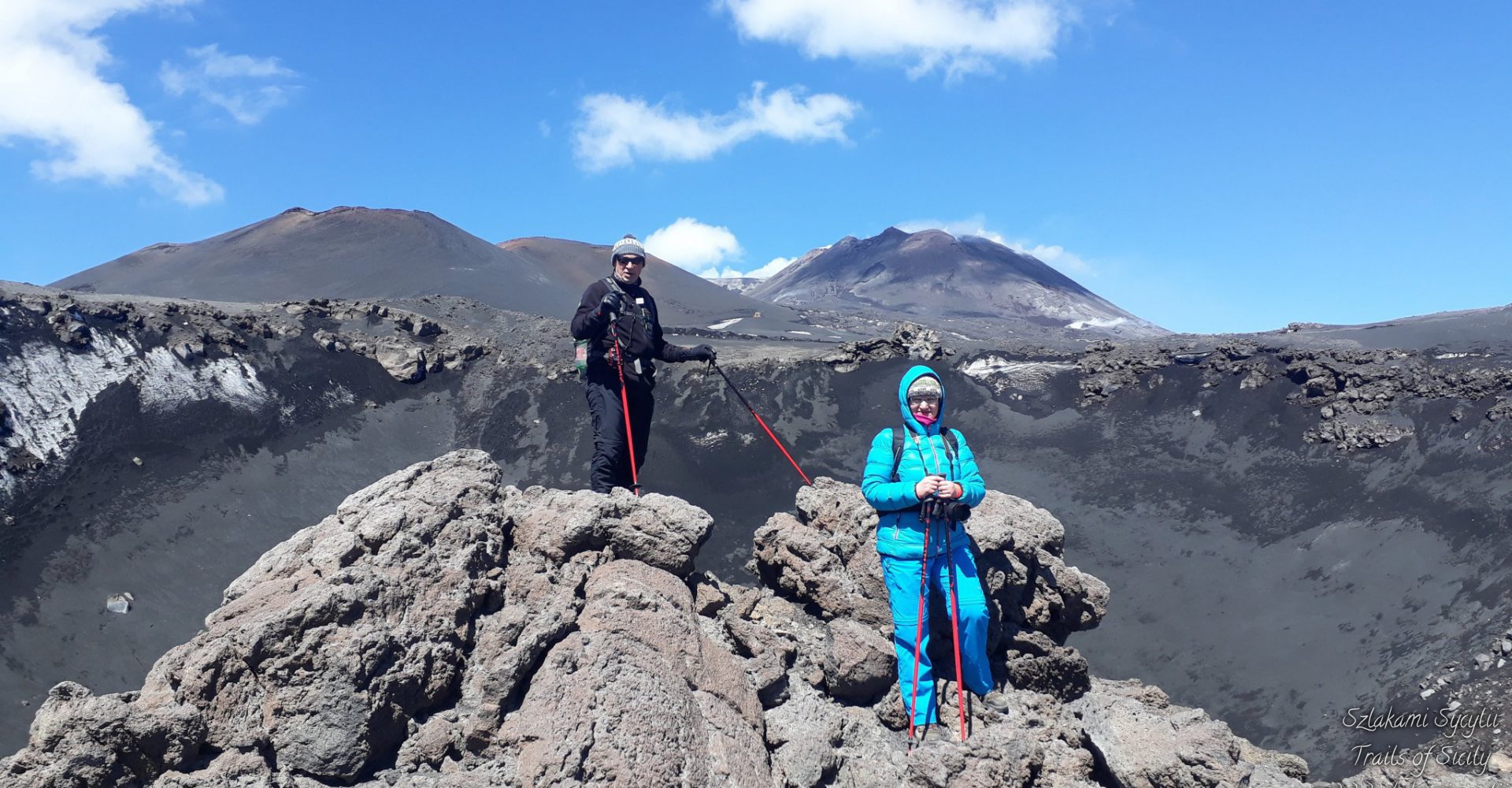Mount Etna Weather: Plan Your Volcano Tour and Choose the Right Gear
Mount Etna, an awe-inspiring volcano towering over 3,000 metres above sea level, captivates not only with its stunning landscape but also with its unpredictable microclimate. When planning a tour to Etna, it’s essential to understand that forecasting the weather here can be challenging. This article provides essential tips on how to dress for your Etna adventure, ensuring a comfortable and enjoyable experience.
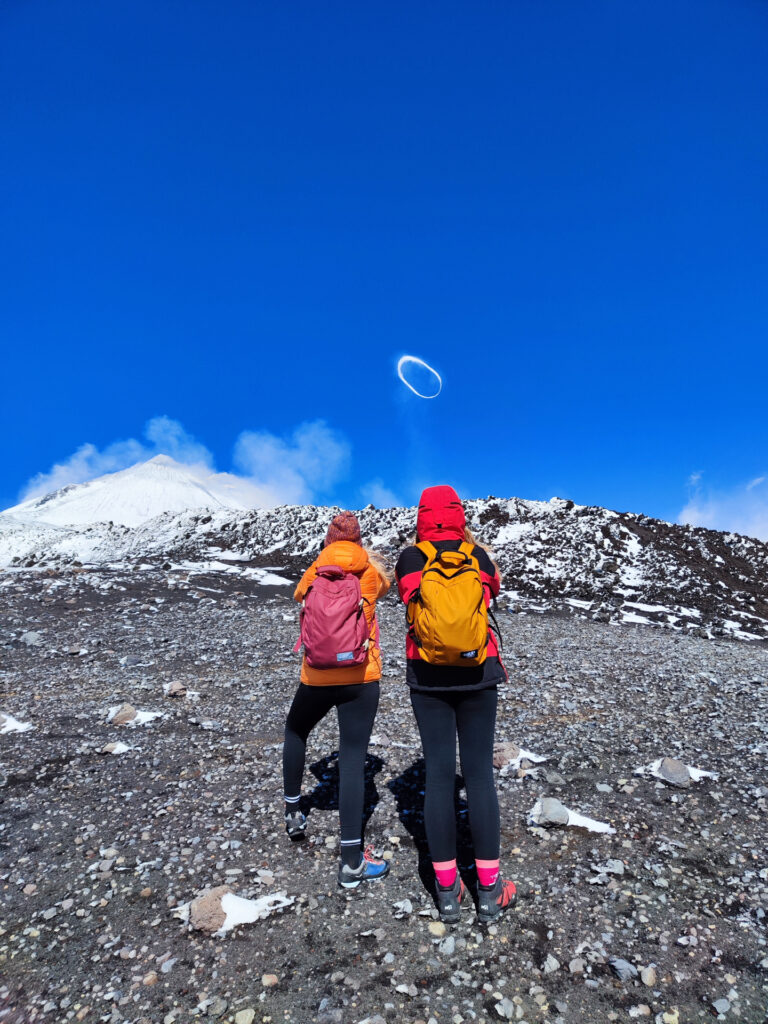
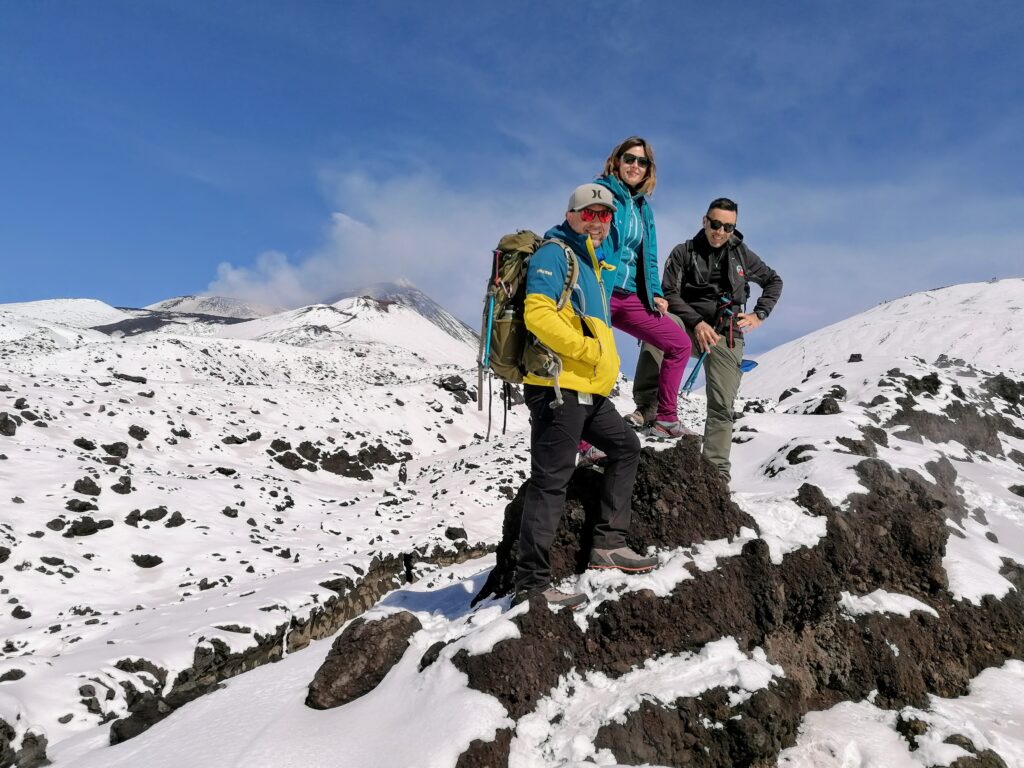
Weather Forecasting for Your Etna Volcano Tour: Flexible Planning
When it comes to weather predictions on Sicily and Etna, checking forecasts beyond three days ahead is often futile. Even if you check the forecast a day before your planned Etna tour, there’s no guarantee it will be 100% accurate. While forecasts can provide a general sense of conditions, such as potential storms, strong winds, cloud cover, or sunny skies, remember that weather can change rapidly. Be prepared for unexpected surprises during your Etna tour.
Searching online forums for weather predictions weeks or even days in advance is unreliable. Conditions on Etna shift quickly, so even if someone reports perfect weather today, it might be completely different tomorrow. Flexibility is key when planning activities on Mount Etna, always considering the volcano’s dynamic weather patterns.

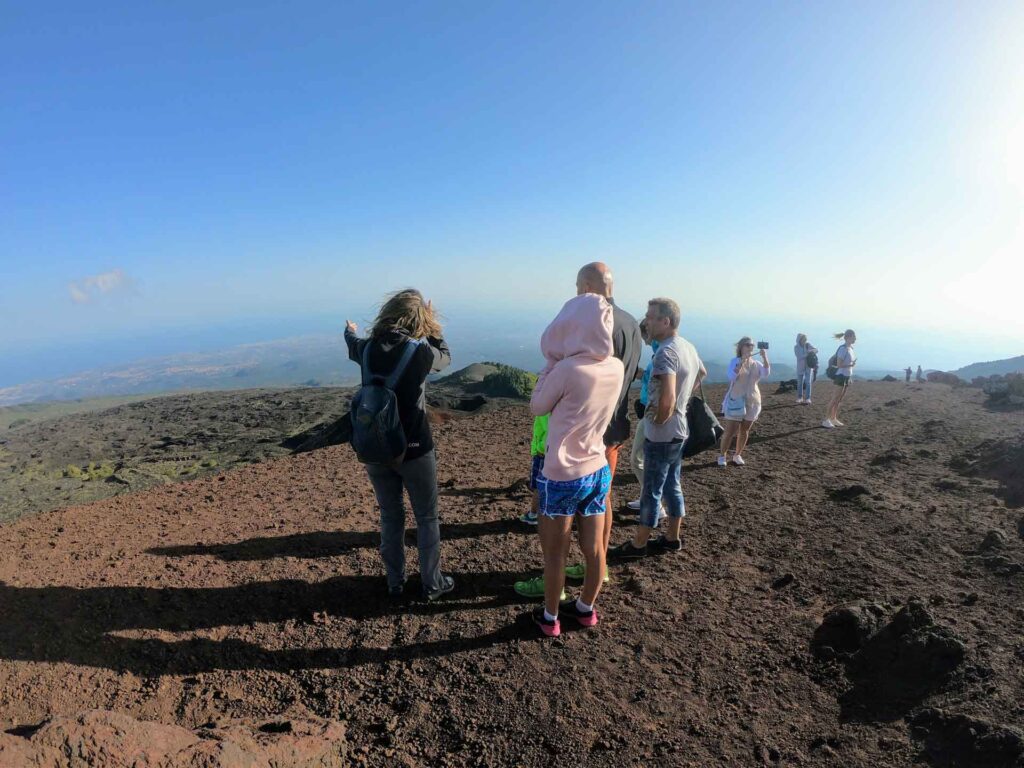
Local Weather Conditions on Etna: Precise Forecasts for Specific Locations
When checking weather apps, avoid relying solely on the forecast for the coastal regions. For example, if it’s 28°C in Catania in the morning, it could be as low as 8°C at 2,000 metres elevation on Etna. Always keep in mind that weather can vary drastically depending on altitude. It’s crucial to bring warmer clothing, even if the temperature is high at sea level, to be ready for the potential drop in temperature during your hike on Mount Etna.
To get the most accurate weather forecast for your trip, input specific locations, such as Rifugio Sapienza, Crateri Silvestri, or Torre del Filosofo if you’re approaching from Catania (Etna South), or Piano Provenzana and Pizzi Deneri if you’re heading from the north (Etna North).
Avoid searching for general “Etna” forecasts, as many apps will show weather for the observatory at 2,900 metres on the northern side. This could lead to misleading results if you plan to visit the southern side at around 1,900 metres.
For more localised and accurate weather updates, use sites like Windy.com and Meteoam.it.
Etna’s Ever-Changing Weather
It’s important to note that on Etna, even a slight breeze, cloud, or mist can cause a sudden temperature drop of several degrees. Perfect weather conditions are never guaranteed, and forecasts may not always reflect reality. Despite optimistic predictions, fog or clouds can still obscure the higher parts of the volcano.
From January to May, there is a higher likelihood of cold, windy, cloudy, or rainy weather on Etna, with the possibility of icy roads. Of course, there’s always a chance you’ll experience a perfect day, hiking through snow in just a t-shirt. Therefore, choosing the right outfit is crucial for a safe and comfortable visit.
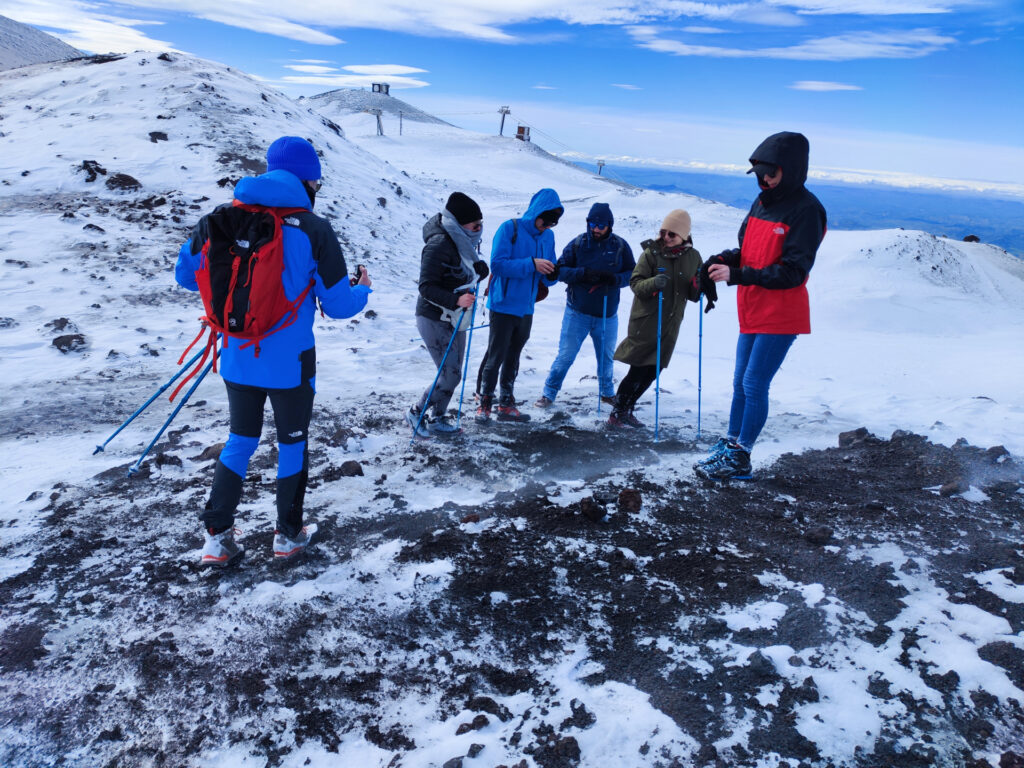
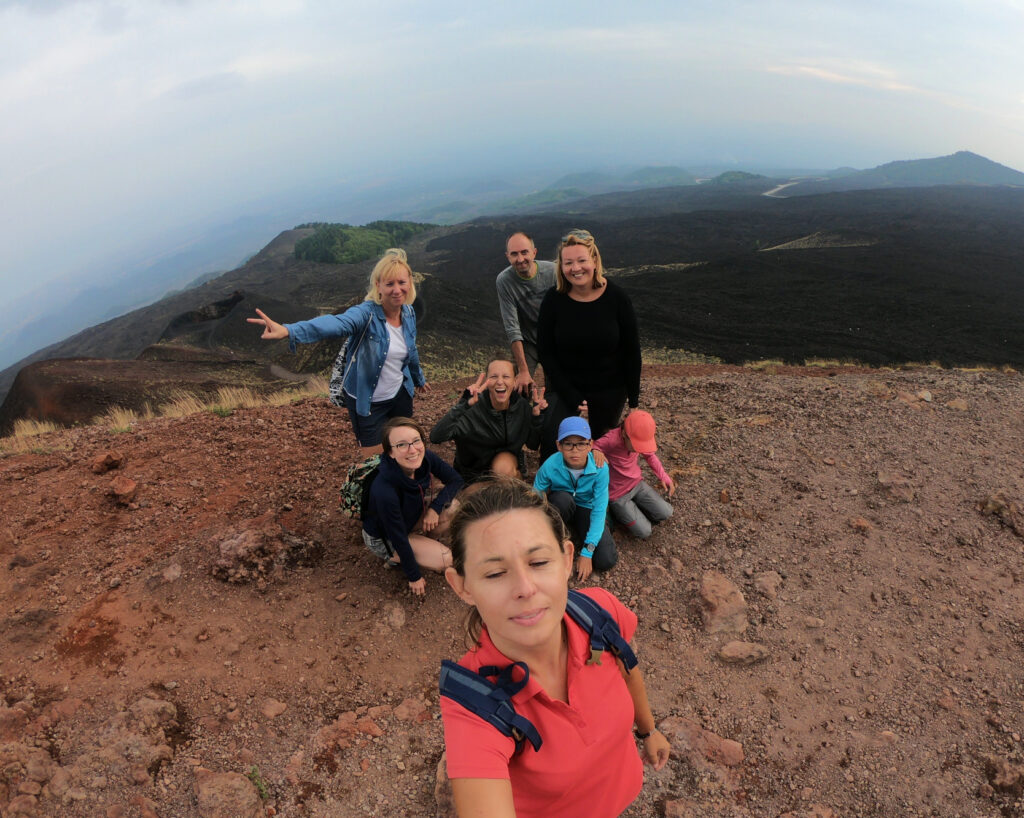
How to Dress for a Safe and Comfortable Etna Tour: Essential Tips
Footwear for Hiking Mount Etna:
Proper footwear is essential. Avoid sandals or shoes with openings, as sharp volcanic dust and lapilli (small stones) can get inside and cause discomfort. Even if you’ve climbed Mount Everest in your favourite sandals, they won’t be suitable for Etna.
For trekking, investing in professional hiking boots is ideal. For casual Etna excursions, sturdy athletic shoes may suffice, but it’s best to choose stiffer models for better foot support. In winter, snow or rain can soak through shoes, so consider renting appropriate footwear if necessary. Proper shoes will enhance your safety and comfort during your Etna tour.
Socks Matter More Than You Think:
Choose high cotton or professional trekking socks that go up to at least the ankle to protect your skin from sharp volcanic dust. Avoid nylon or “invisible” socks, as even the smallest lava particles can irritate your feet, forcing frequent stops to empty your shoes. If you’re renting shoes, good socks are even more important to prevent blisters.
Jacket – Your Key to Comfort on Etna Excursion:
A jacket is a crucial item. The most important feature is wind resistance. In summer, a light windbreaker may suffice, but in other seasons, a warmer jacket, fleece, or other technical gear is recommended. Remember, even during summer, temperatures above 2,000 metres can be low, and in winter, wind chill often makes temperatures feel below freezing. If you plan to ascend above 2,500 metres, always bring warmer clothing. Layering is advised to adjust easily to changing weather conditions.
Pants – Protection and Comfort During the Hike:
Long trousers are always a good choice for mountainous terrain. In summer, lightweight, breathable models or professional trekking trousers work well. Long trousers protect against scratches, sun exposure, insects, and prickly vegetation. For casual tourists visiting during the hottest months, shorts might be fine.
A Spare Shirt for Extra Comfort:
In summer, a spare shirt is handy. Trekking often leads to sweating, and walking in a wet shirt can be uncomfortable. Bringing an extra t-shirt ensures you stay comfortable during your hike.
Head Protection from the Elements:
A hat and an ear band are essential accessories. Personally, I never head into the mountains without an ear band, and in winter, a warm beanie is a must. Wind on Etna is common, even during summer, and can feel quite uncomfortable. In winter, it’s a necessity. Avoid caps or hats with brims, as they can easily blow off in the wind.
Gloves for Safety and Comfort:
Gloves are important, especially if you plan to use trekking poles. They can be useful even in summer, protecting your hands during the hike.
Eye Protection from Sun and Dust:
Sunglasses or protective eyewear are essential for shielding your eyes from both the sun and potential dust. Even if you usually wear contact lenses, combining them with protective glasses offers full protection during outdoor activities on Etna.
A Backpack for Essentials:
A backpack is a must for your Etna excursion. The uneven terrain and lava fragments make it essential to keep your hands free. Carrying a bag on your shoulder can be uncomfortable, while a backpack not only allows free movement but also helps balance your load, making the hike easier.
Raincoat – Protection from the Elements:
A raincoat is advisable, especially between November and June. Bring a jacket, poncho, or raincoat to protect against potential rain. Avoid umbrellas, as they tend to be ineffective in the windy conditions of Etna.
Sun Protection for Your Skin:
Don’t forget sunscreen, whether in summer or winter. UV protection is crucial in all seasons, especially at higher altitudes where the sun’s intensity is stronger.
Choose Bright Colours for Safety and Stunning Photos:
Bright, vivid colours stand out better against the volcanic landscape and look great in photos. Dark colours like grey, black, or brown can blend into the lava background, so opt for more vibrant tones for your outfit.
Discover Etna with Our Professional Tours
If you’re ready to explore Mount Etna and want an unforgettable experience, check out the Etna tours we offer. Whether you’re interested in a guided trekking adventure or a scenic tour, we provide customised trips that suit every type of traveller. Here is the text with the active link for WordPress:
Visit our Etna Tour Page to learn more and book your tour today!
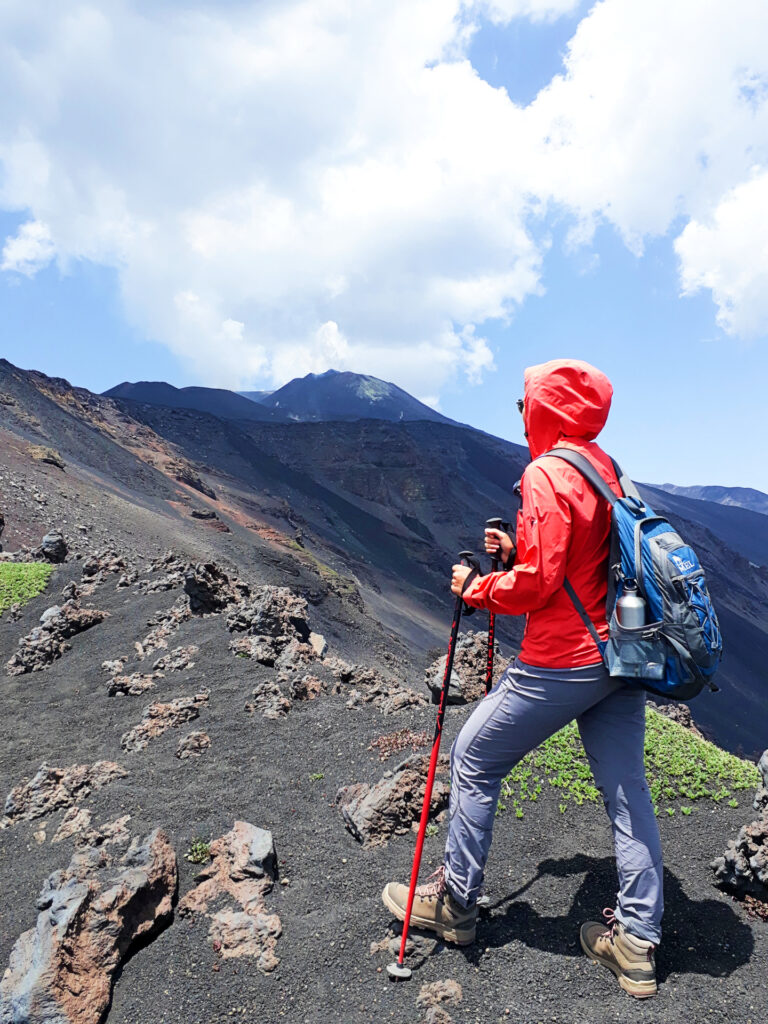
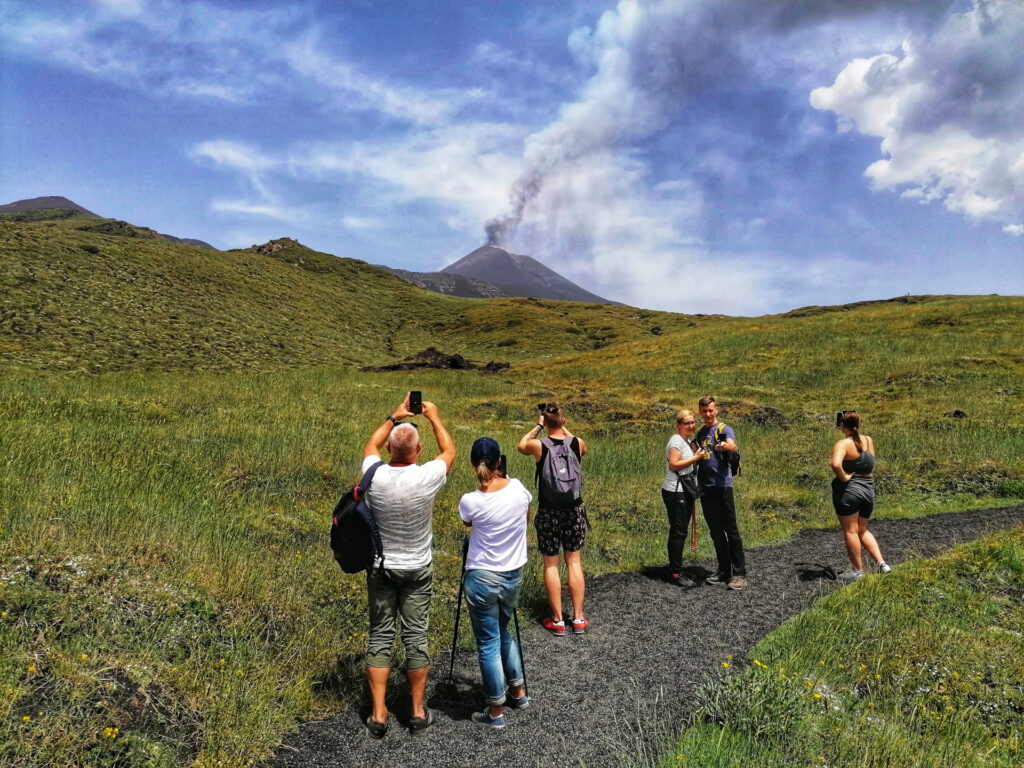
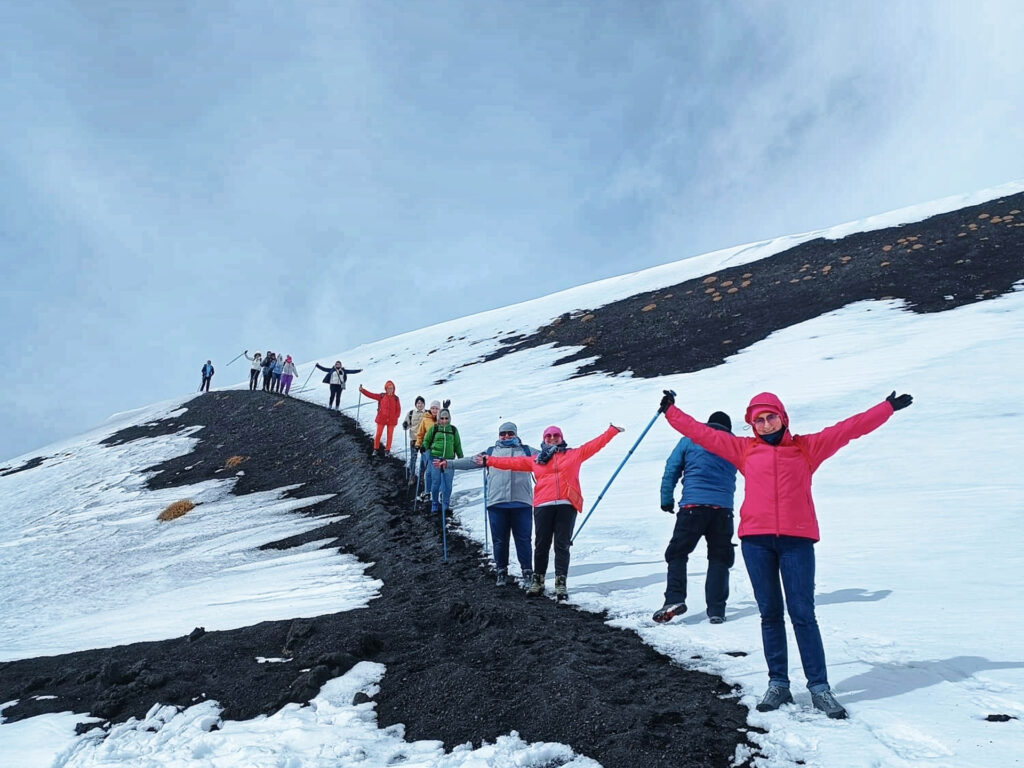
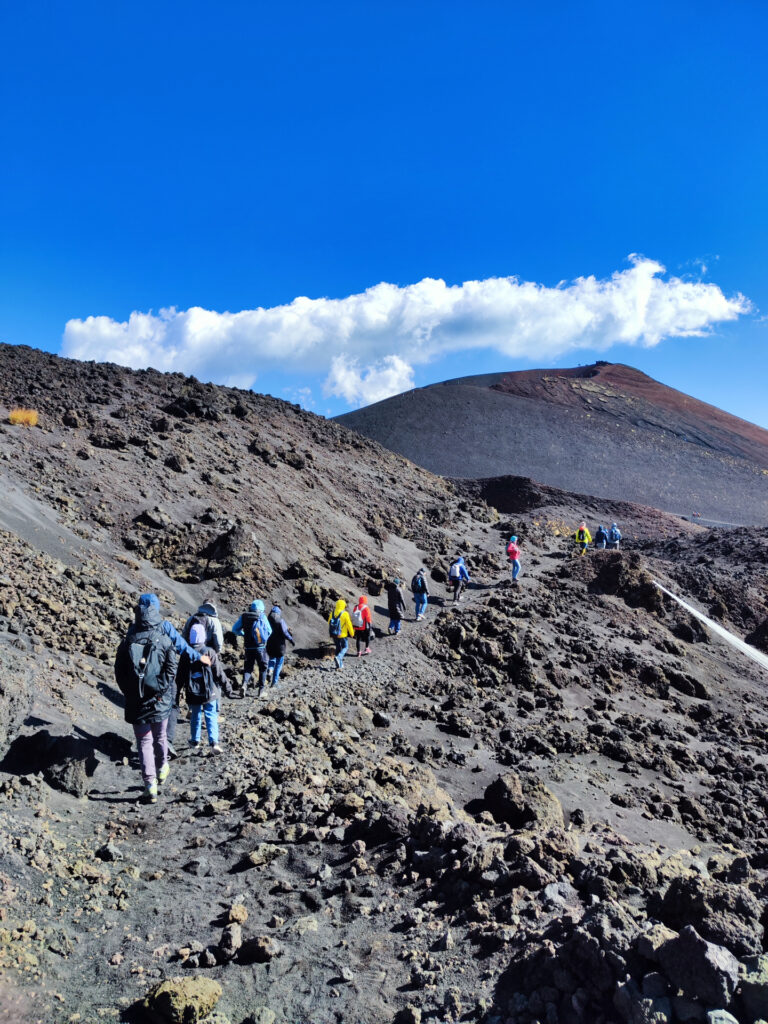
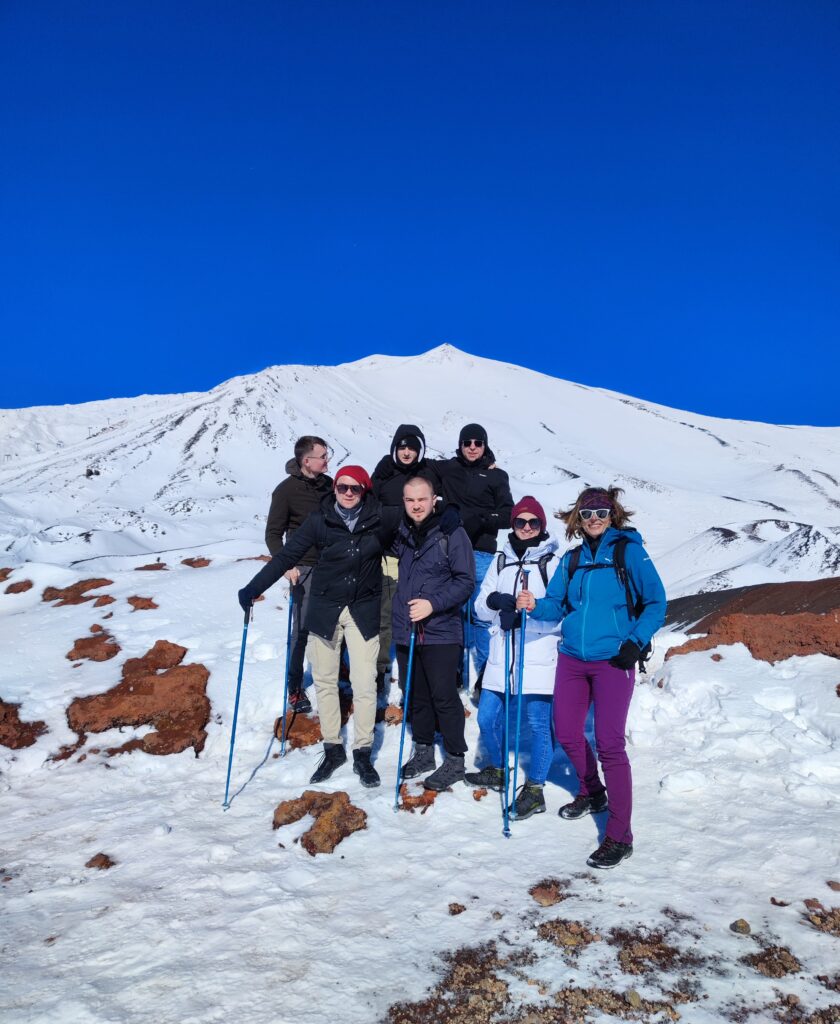
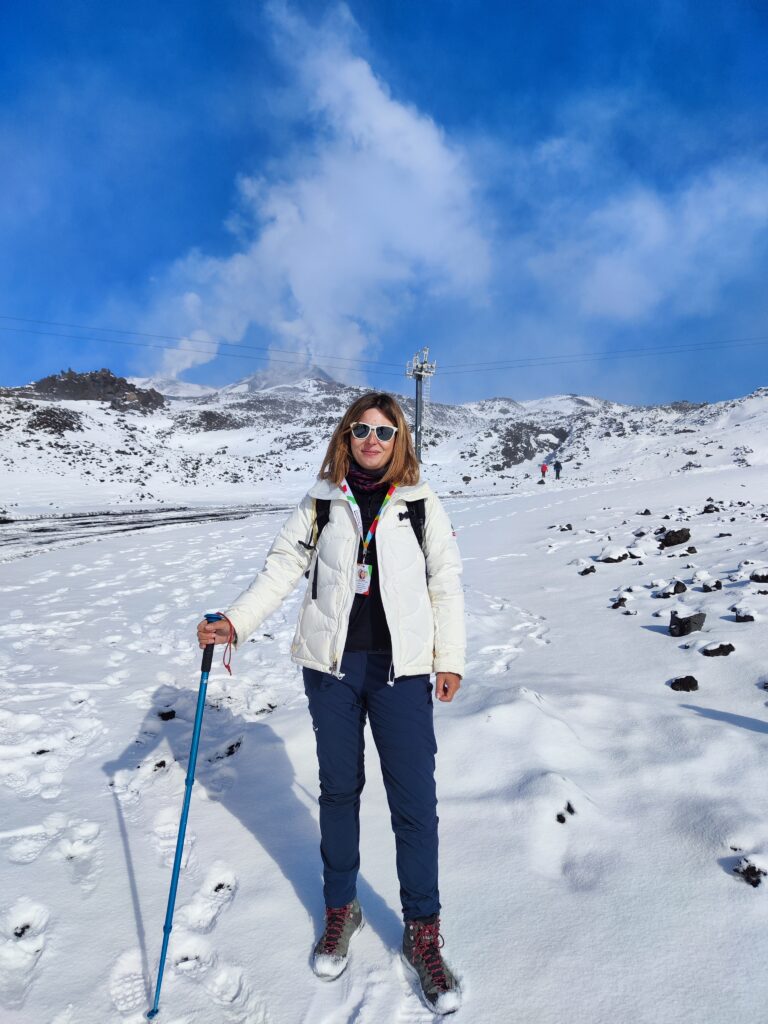
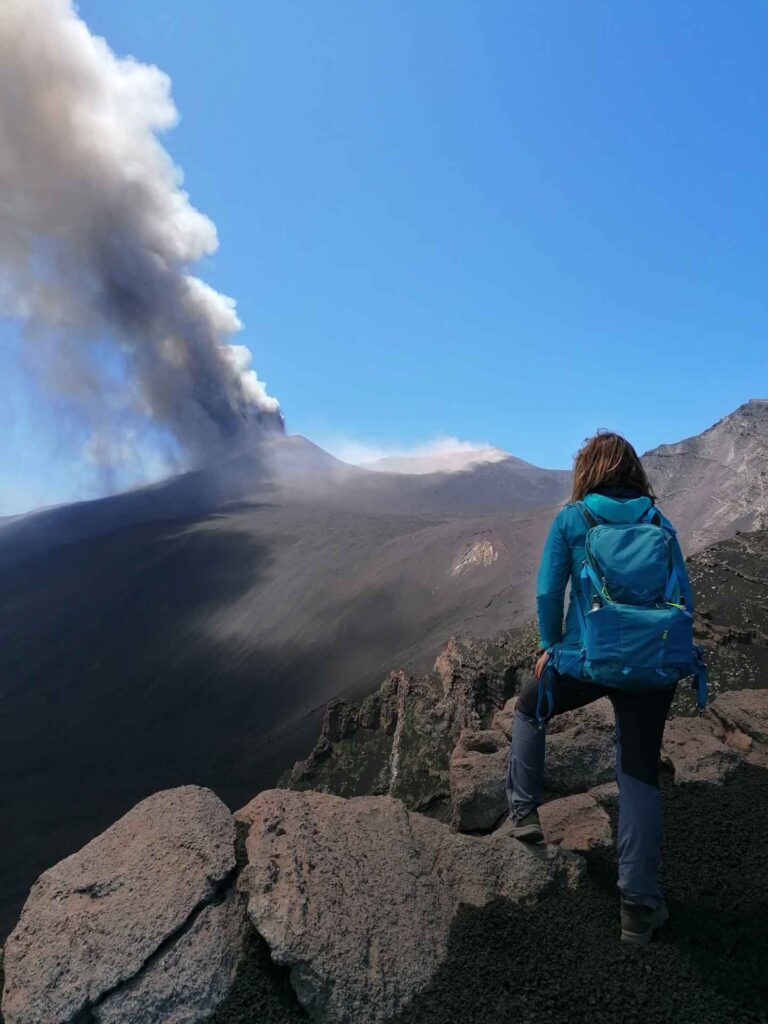
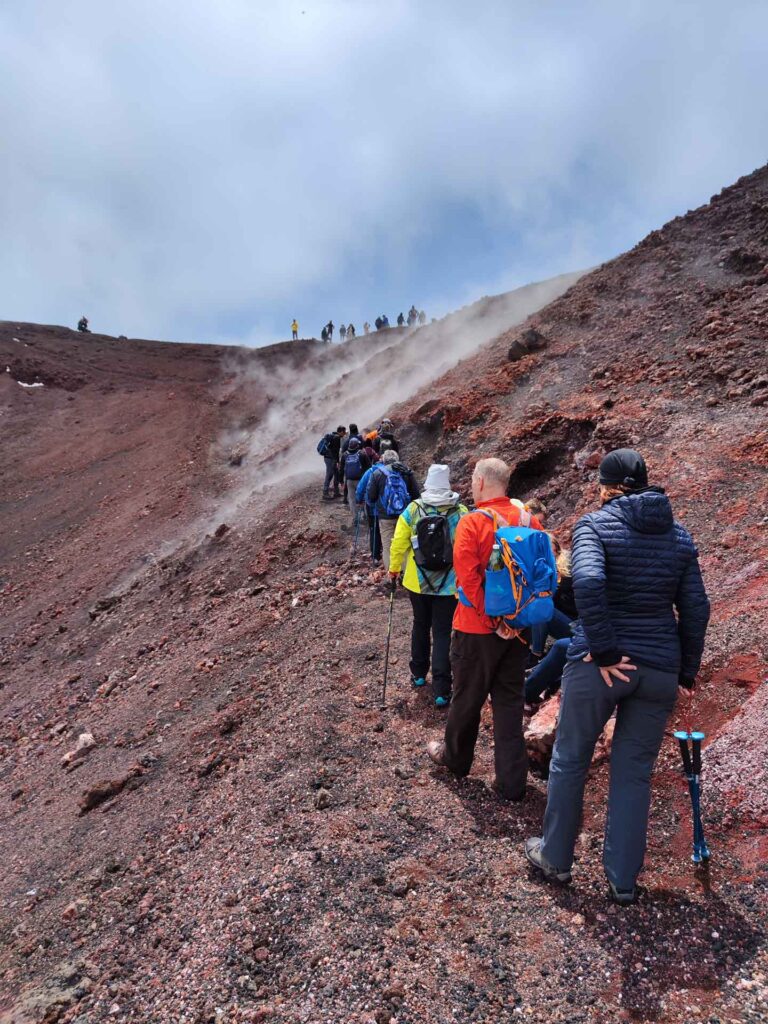
Conclusion
Proper preparation is key to a successful and safe Etna volcano tour. Choosing the right clothing, staying ready for changing weather conditions, and packing essential gear like sunglasses and a backpack will enhance your experience of this extraordinary place. Remember, despite Etna’s beauty, it can surprise visitors with unpredictable weather, so be prepared for all scenarios. Stay comfortable, healthy, and safe, ensuring that every moment on Etna is unforgettable and free of unnecessary discomforts.
